Cardinals are among the most frequently recognized birds that you will encounter, not just in your gardens and at your feeders yet quite many anyplace owing to the brilliant red plumage that they have.
When we spot a cardinal at the bird feeders, particularly a male cardinal, we immediately grab the camera or the binoculars in an effort to get a better look at the bird.
Since they are so well-known, a great number of individuals are curious about various aspects of them.
In this post, we will discuss some fascinating and interesting facts about the cardinals.
Interesting Facts about Cardinals
1. Cardinals are the First and Last Bird Visiting the Bird Feeders

Cardinals are usually the first birds during the morning and the last birds during the evening to come to the bird feeders. This is due to the fact that cardinals are the very last birds to eat in the evening.
If you want to entice cardinals towards your backyard, keep in mind that you always maintain the bird feeders filled. This will prevent the cardinals from having to fly back to their home territory in search of food when they’ve already consumed it in the yard.
The spectacular feathers of the male cardinal appear not to be overly dazzling at the twilight period of low-intensity light, which provides the cardinals with protection from their potential predators like as hawks and cats that may be in the area.
There is also the possibility that the birds attend the feeders at certain times in order to ignore the competition and group together at the backyard feeder.
This is one of the hypotheses that has been put up. Because there aren’t many other species nearby, they may quietly consume their favored seeds in peace.
2. Cardinals Are Meaningfully Associated With Both Strength And Confidence
Taking the time to observe the intrepid, watchful, and self-assured kinds of birds is the ideal way to illustrate the importance of acknowledging one’s own strength, power, and abilities.
These birds have such a high level of self-assurance that they are not scared of either themselves or their strength, and they do not hesitate to defend their area by showing hostility to any outsiders that come near it.
The great self-assurance that exudes from Cardinals should serve as a source of motivation for us. We should take our cue from the way in which the bird is proud of its plumage and does not take the gifts it has received for granted.
It is a hint that every one of us as individuals needs to likewise concentrate on our own souls and learn to value ourselves as well as the qualities that make us unique.
3. Cardinals have a Long Life Expectancy

Over the course of time, the earliest cardinal that was ever recorded lived for about 15 years and nine months. Observations of this female cardinal were made in the state of Pennsylvania.
However, it has been documented that a Cardinal bird that was kept in captivity for its whole life lived for 28.50 years.
The typical lifetime of a Cardinal is just around two to three years, making it one of the shortest in the animal kingdom. Check my blog if you want to learn more about the lifespan of cardinals.
4. Northern Cardinal Has Many Names
The Northern Cardinal is most often known as the Cardinal, despite the fact that it is sometimes called the red bird, Virginia Nightingale, Common Cardinal, and also the Winter Redbird.
Because it is among the species that are able to be recognized with the least amount of effort, thanks to its flashy appearance and unique brilliant red feathers, the term “Cardinal” may be used to adequately describe the bird without any more qualification.
5. High Mortality Rates
Cardinals are renowned for having high rates of mortality. The yearly survival rate of Cardinals is somewhere between sixty and sixty-five percent. The high death rate among juveniles may be linked to a number of different circumstances.
As a result of its small size, the unfortunate bird is vulnerable to a variety of threats, including being consumed by predators, being involved in accidents like being struck by automobiles, and often crashing into the windows of buildings when flying at high speeds.
In other instances, cardinals meet their end as a consequence of famine or illness, both of which might be considered causes of death.
6. Cardinals Bird Species Are Extremely Terrifying
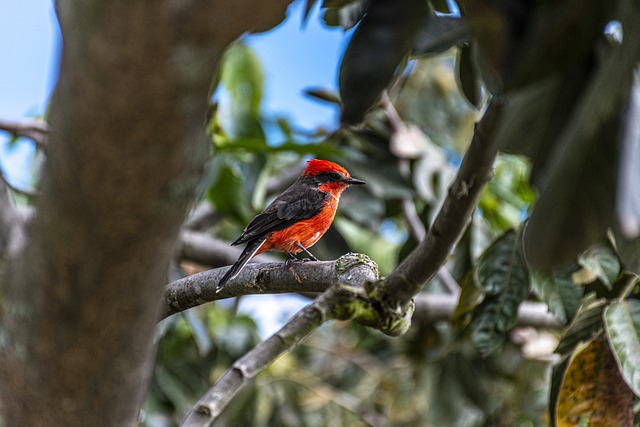
Male Cardinals are very aggressive in order to safeguard their area, and they will fight off any potential invaders that get close to their territory. Because of this, it is possible that you may notice them chirping quite loudly.
Cardinals are known for being among the hardiest and most robust bird species. They would construct their nests inside the territory of certain other birds, yet, in order to preserve their environment, they would not allow any other bird, not really even other Cardinals, to approach anywhere near their home.
The red cardinal’s fiery temperament causes other birds to flee if they get too close to it. You may find out additional information regarding the territorial character of this specie by reading the blog that I maintain.
7. Cardinals, Particularly the Males, Misjudge Their Reflection On Numerous Surfaces
Discovering how cardinals react when confronted with such considerations might prove to be quite entertaining for you.
Because it perceives the invaders to be a danger, the cardinal acts in a very aggressive manner and engages in a persistent battle with its own image for many hours.
The bird’s level of stress rises as it engages in this vicious combat with itself, but unfortunately, the naïve Cardinal might also get injuries as a result of this tough engagement.
8. Protection Of The Territory
During the mating season, cardinals will fight off any invaders that try to enter their home territory. You’ll notice a difference in the male cardinal’s behavior as the time of year draws closer to breeding and mating season.
Ornithologists believe that this behavior is caused by elevated sex hormones in the bird, causing the bird to be highly possessive and wary of many other Cardinals.
During the same time, you may notice that the cardinals who are nesting in the area surrounding you become quite aggressive. They may fight and drive away any visitors that they see as being a danger to their young.
9. Cardinals Are An Amazing Sight to See During the Winter Months

During the worst parts of winter, when snowflakes are constantly falling from the sky, the brilliant, crimson-red feathers of cardinals makes for an absolutely breathtaking sight.
Imagine a stunning scene with a white backdrop, and the only red bird to be seen is a cardinal. This bird would stand out beautifully against the white background. Because of this, cardinals are sometimes thought of as “Winter Redbirds,” another name for the species.
10. Northern Cardinals Seem to Be Mostly Non-Migratory Birds
Many species of migratory birds leave their breeding grounds in the fall and go south to milder climates, only to return after the harsher winter months have passed. The very cold temperature makes it difficult for them to get food throughout the winter, which is necessary for their survival.
It is not difficult to track down the seeds which this bird uses for food over the year. Because of this, the flock of teeny-little red cardinals chooses to stay the winter within the same environment that they use throughout the summer.
Because there is always food available, the little species may graze on a wide range of seeds throughout the whole year. Learn more about the bird that does not migrate by reading the post that I wrote.
11. Cardinals are the Official State Bird of the Seven United States
The showy red songbird, widely regarded as being among the most well-liked and highly sought-after species, has been recognized as the unofficial state bird in no less than seven major states.
Included in this list are the states that officially chose the cardinal as their official state bird.
- Illinois – 1929
- Kentucky – 1942
- West Virginia – 1950
- North Carolina – 1943
- Virginia – 1949
- Ohio – 1933
- Indiana – 1933
12. Female Responsibilities
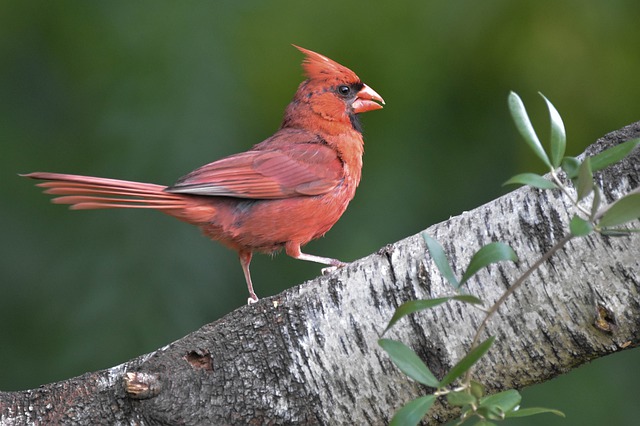
The majority of the work in constructing the nest and nurturing the eggs falls on the shoulders of the female.
Even while the male assists collect stuff for the building of their nest, like twigs, dog furs, pine needles, and grass blades, the work of putting the nest aligned is essentially the responsibility of the female Cardinal. The male-focused on restoring the materials.
After the female has completed the process of laying the eggs, she will then proceed to incubate the eggs for a period of 12 to 14 days. During this time, the male will fight to protect their territory from any exterior invaders and will guard it against any potential assailants.
13. Categorized As Granivorous Bird
Have you taken a careful look and noticed how the cardinals’ beaks are formed like cones? They have been thoughtfully crafted to make it easier for them to consume their favorite meals.
Cardinals like a variety of seeds, including nyjer, safflower, black oil sunflower, and cracked maize, among others.
Because Cardinals have unique beaks, they are able to quickly break through the shells and hulls of the seeds, allowing them to enjoy a diet that is very healthy.
You just need to make sure that the birds in your garden have access to the proper food in order for you to be able to take pleasure in the breathtaking sight of cardinals there on a daily basis.
14. Cardinal Laying Occurs Once Every Year
Have you recently seen a cardinal that was almost featherless and completely bald all over its body? It is not the most captivating sight as the bird reveals its skin, which is blackish-grey in color and is devoid of feathers on its body and head.
You should not be concerned; the Cardinal that you are seeing is not ill. At the very least once every year, cardinals will go through the process of molting in order to refresh and renew their worn-out plumage.
After a few weeks, the bird will have its beautiful feathers once again because its plumage will have grown back.
15. Cardinals Sometimes Look Like They Are Kissing Each Other
After the male and female Cardinals have chosen one other to become mates, the male Cardinal is the one responsible for providing the majority of the food for its mate. The male searches for seeds during courting and then uses a procedure known as “beak to beak” to give the seeds to the female.
This public exhibition of devotion between them is comparable to the two birds making passionate kissing noises to one another.
16. Red Cardinals Weren’t The Only Kind Of Cardinals; Yellow Cardinals Are Also Available, But Only Once In A Great While
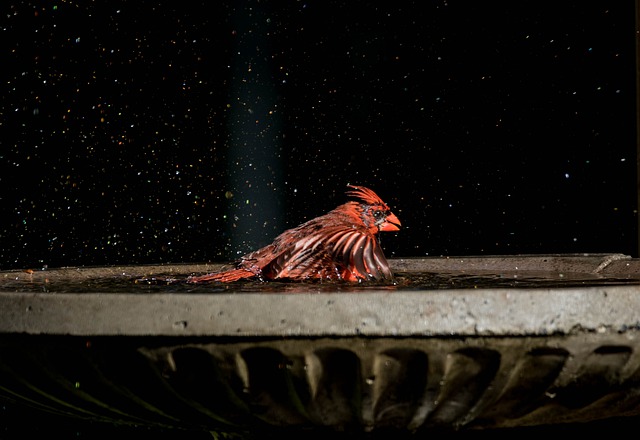
Even more beautiful than the red cardinal is the yellow kind. Sometimes, the body of a Cardinal may lack the brilliant red pigment that can be seen in the feathers of the bird. This condition is known as a “cardinal deficit.”
The ensuing plumage color gives the bird a brilliant yellow or orange hue, and because of this, we refer to the bird as a yellow Cardinal. This condition is often caused by a hereditary plumage variant known as xanthochroism.
Because yellow cardinals are so uncommon, if you do happen to see one, you may count yourself among the exceedingly fortunate few.
17. Carotenoids Pigment
The carotenoid pigment is responsible for giving cardinals their distinctive crimson color.
The cardinal is easily identifiable because of the very brilliant crimson wash that covers its feathers.
Females are often a drab brown color with variable concentrations of red shade in the wing bands and tail, in contrast to the males, who typically have brilliant red feathers all over their bodies. But what exactly is the cause of the red color?
The existence of the pigments carotenoids in the plumage of the bird is principally responsible for the color red that is seen in the feathers. These pigments are neither natural to the bird nor are they produced by the bird’s body. Neither of these things is true.
Consuming plants that have comparable pigmentation, such as brilliant grapes, dogwood berries, red cherries, and others, is the way to take in this stunning shade of red rather than drinking it.
Consuming certain insects that have previously dined on colorful plants that are identical in appearance also provides a source of this pigment. The hue of the bird’s feathers is directly proportional to the richly pigmented foods it consumes.
Hence the bird’s diet has a significant role in determining its overall appearance.
18. Cardinals Form Vatican’s Of Cardinals In Winters
Cardinals are quite possessive about their territories. The birds, in contrast, are seen to abandon their territorial limits and instead congregate together throughout the winter months in order to create flocks consisting of a large number of individuals. This phenomenon may be seen.
A flock of cardinals might be described as a conclave, college, splendor, or even as the Vatican of Cardinals. These terms all refer to the same group.
If you’re wondering why the birds change their behavior, the primary explanation is that they flock together in the winter so that they may improve their chances of finding food during the months when it’s harder to do so due to the snow.
When they are flying about together in search of food, they have a better chance of finding a tasty morsel than when they are flying around individually or in pairs.
19. Hopper or Platform Bird Feeders Are More Appealing To Cardinals
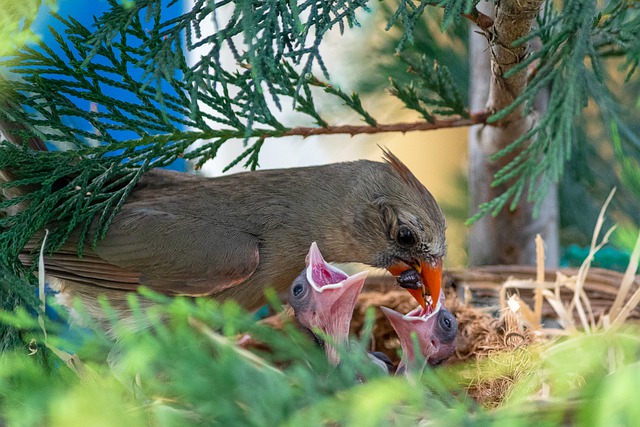
The cardinal is rather larger than the majority of other tiny birds, such as the finches. Cardinals are large and heavy birds; thus, it is necessary that the feeders you put in your garden be solid and strong enough to carry the weight of the bird.
If the feeders do not provide sufficient room for the cardinals to sit and eat, the birds may injure themselves by falling off of them and hitting their heads.
The Cardinal prefers to eat from dangling or platform bird feeders since these types of feeders provide sufficient space for the bird to eat in a comfortable manner. Discover everything there is to know about the Perky Bird Feeder for Cardinals.
20. Cardinals Are Considered To Be Medium-Sized Birds
The lovely red birds have a total length of approximately 8.4 to 9.1 inches and a wingspan that ranges from 9.7 to 12.3 inches. This places them in the category of being medium-sized songbirds.
Behold how the brilliant crimson creates an enchanting scene when the wings are stretched out during flight! The mature bird may weigh anywhere from 33 to 65 grams, with 44.7 grams being the typical weight of an individual bird.
Even though there is very little variation in size between the male and female Cardinals, with the male being somewhat bigger than the female, this variation is not very noticeable.
21. The Vocalisations Of Cardinals Are Easily Distinguishable From Those Of Other Birds
It is possible that you will not be capable of seeing the Cardinal using your unaided eyes if you are in the thick plantations.
Even though the bird has brightly colored feathers, it might be hard to locate due to its little size and its ability to camouflage itself. Rather, you may determine the presence of a Cardinal in the area by listening for the distinctive and upbeat melodies that they make.
Cardinals may be identified by their particular melodic vocalization patterns, such as “birdie birdie birdie” or “cheer-a-dote cheer-a-dote,” among others.
You will instantly recognize the beautiful tiny bird that is singing on the branches of the trees that are situated at a great height.
22. The Historical Catholic Bishops Provide Inspiration For The Naming Of Cardinals
The hue of the Cardinal’s brilliant red feathers is identical to the color of the vestments worn by the Cardinals of the Roman Catholic Church, which are also brilliant red.
The term “cardinal” refers to the similar hues of the male and female cardinals, which dates back to the period of the first European settlers in what is now the United States.
What exactly does it mean to be a Cardinal? A cardinal is a widely regarded official of the Catholic Church who has a position of power below that of the Pope. The term “cardinal” originates from the appellation that is given to Catholic bishops.
The clerical body is a part of the Sacred College of Cardinals and acts as the Pope’s personal secretary.
23. Cardinals Are Dimorphic Birds
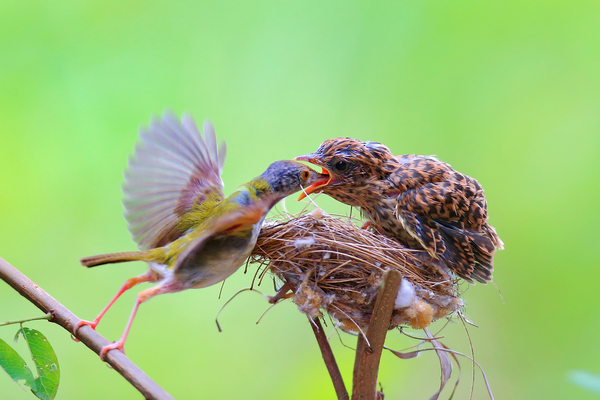
The male and female Cardinals, like those of numerous other songbird species, may be easily distinguished from one another visually. There is a clear demarcation between the male and female of the species.
The female cardinal does not have the same flashy red feathers as the male cardinals, which are distinguished from a distance by their coal-black face masks and flamboyantly red feathers.
It has far more refined qualities, giving off an air that is both refined and inviting.
The bird is able to conceal itself sufficiently thanks to its smoother greyish-brown feathers, its orange beak, and the shades of red in its wing bands and tail. As a result, it is better able to avoid being seen by potential predators than the male is.
24. Cardinals Purposely Cover Themselves With Ants In Order To Hide From Prey
This is among the most remarkable facts about the Cardinals, despite the fact that it may seem even more unbelievable. The cardinal introduces itself to the ants, whether they are still alive or crushed, while it is carrying one of the insects in its mouth.
It then stretches out its wings, brings its tail forward, then lowers them, enveloping itself in a swarm of ants in the process. After that, these ants would crawl throughout the body of the bird.
The activity of anting, in which cardinals release formic acid, assists the cardinals in removing any parasites or lice that may be present on their feathers.
These ants, luckily, do not have stingers, and the protective secretions that they produce aid in warding off predators from the outside.
25. Cardinals Are Birds That Focus On Their Families
The fact that both of the parental cardinals provide attentive care for their young is evidence of a healthy and harmonious family dynamic.
The cardinals place a high value on the welfare of their young and make it a top priority in their daily lives.
When the time for incubation is complete, and the eggs have hatched, creating tiny little hatchlings, the mother Cardinal and the father Cardinal share the job of providing food for their young.
In contrast to the males of numerous other bird species, Cardinal males accept full responsibility for feeding and rearing their young, even while the female is in the process of laying another clutch of eggs.
Check out this article on Cardinal vs Red Robin to learn about their differences.
Conclusion
These amazing animals are some of the kinds that bird watchers covet the most since they represent one of the most stunning birds that can be seen everywhere.
They are among the most prominent birds that have drawn people’s attention to the activity of bird watching.
You will remember these wonderful facts about the red beauties the next occasion you are captivated by the appearance of the violent birds in your backyard because you will remember them now.
FAQ
How do cardinals spend their evenings?
Cardinals will sleep anywhere from a high tree to a thick shrub to a suitable birdhouse to a covered limb or even a vast tree cavity. Cardinals, like many other birds, prefer to sleep with their heads covered and in safe locations at night to avoid being eaten.
How would you describe a cardinal?
Because of their reputation for vigorously defending their territory, cardinals have become popular as team mascots. There are two major sports teams in the United States that take their names from this bold red bird because of its fierce disposition: the Arizona Cardinals of the National Football League and the St. Louis Cardinals of Major League Baseball.
Last Updated on March 22, 2023 by Lily Aldrin
